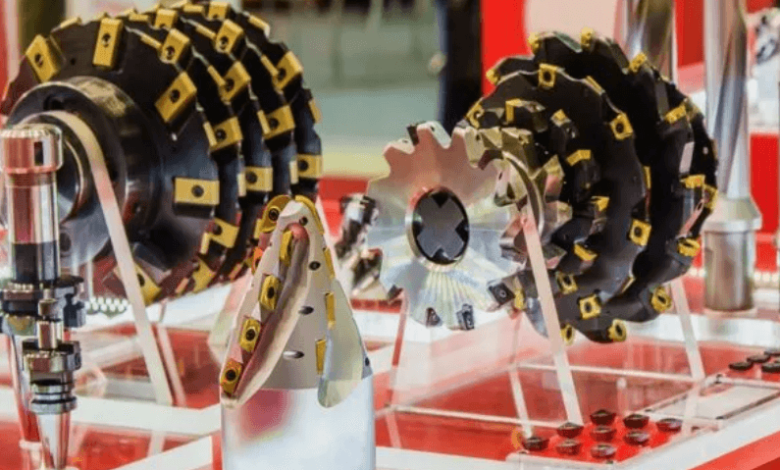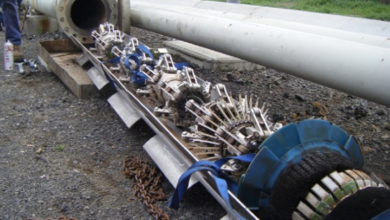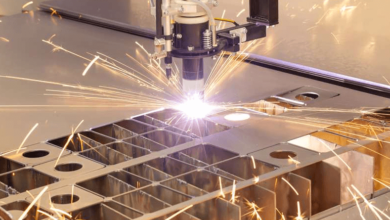The Ultimate Milling Cutter for Hardened Steel: Performance, Precision, and Productivity

In today’s world of precision manufacturing, working with hardened steel presents unique challenges. From the automotive and aerospace sectors to tool and die making, hardened steel components are widely used due to their superior strength, wear resistance, and durability. However, machining such tough materials requires not just any tool — it demands a specialized milling cutter for hardened steel.
This article explores the essentials of choosing, using, and maintaining the best milling cutter for hardened steel applications. Whether you’re a CNC operator, a machinist, or a procurement manager looking for the best tooling solution, this comprehensive guide will provide valuable insights to ensure superior performance and efficiency.
Understanding Hardened Steel and Its Machining Challenges
Hardened steel refers to carbon or alloy steel that has been heat-treated to achieve a hardness typically above 45 HRC (Rockwell Hardness Scale). These steels are used in high-load and high-wear environments, such as gears, molds, dies, bearings, and shafts.
While their hardness makes them ideal for long-term use, it also makes machining more difficult. Key challenges include:
- Rapid tool wear
- Excessive heat generation
- Vibration and chatter
- Poor surface finish if incorrect tooling is used
To overcome these problems, using a dedicated milling cutter for hardened steel is essential.
See also: Techoelitecom: Exploring the Tech Elite
What Makes a Milling Cutter Suitable for Hardened Steel?
Not every milling cutter can handle the demands of hardened steel. The right cutter needs to combine several key features:
1. Material Composition
The ideal cutter is made from ultra-hard materials such as:
- Solid carbide
- Cermet composites
- Cubic boron nitride (CBN)
- Polycrystalline diamond (PCD) for extremely hard applications
Solid carbide is the most common and cost-effective choice for hardened steel milling.
2. Special Coatings
Coatings play a critical role in increasing heat resistance and extending tool life. Common coatings include:
- TiAlN (Titanium Aluminum Nitride): Offers excellent thermal stability and oxidation resistance.
- AlTiN (Aluminum Titanium Nitride): Great for dry machining and high-speed applications.
- TiSiN (Titanium Silicon Nitride): For extremely hard steels and high-speed cutting.
3. Optimized Geometry
The cutter must have an appropriate helix angle, flute design, and edge sharpness. Some common features include:
- Variable helix to reduce chatter
- Corner radius for added edge strength
- Micro-grain carbide structure for improved wear resistance
Types of Milling Cutter for Hardened Steel
There are several types of cutters designed to address different milling needs:
1. End Mills
End mills with square or radius tips are the most versatile tools for slotting, contouring, and profiling. Look for solid carbide end mills with high-performance coatings.
2. Ball Nose Cutters
Perfect for 3D contouring in mold and die industries, ball nose cutters can machine hardened steel with precision, especially in finishing operations.
3. Roughing End Mills
These have serrated flutes to aggressively remove material while minimizing vibration and heat.
4. High Feed Mills
Designed for shallow depth-of-cut but high-speed passes, these tools boost productivity while maintaining tool life.
Applications of Milling Cutters for Hardened Steel
Industries and parts that rely on hardened steel machining include:
Automotive
- Gears
- Transmission components
- Engine parts
Aerospace
- Structural components
- Tooling equipment
- Landing gear parts
Tool & Die
- Mold cavities
- Punches
- Forming dies
Heavy Machinery
- Wear-resistant components
- Industrial cutting tools
Benefits of Using the Right Milling Cutter for Hardened Steel
Using the appropriate milling cutter for hardened steel has far-reaching benefits:
1. Extended Tool Life
High-performance coatings and materials prevent rapid wear, reducing tool replacement costs.
2. Improved Surface Finish
The right cutter geometry and material ensure clean, burr-free finishes even in tough steel.
3. Higher Cutting Speeds
Advanced tools can sustain higher feed rates and spindle speeds, improving productivity.
4. Reduced Downtime
Fewer tool changes mean less machine downtime, contributing to higher overall efficiency.
5. Consistent Accuracy
Precision-ground cutters maintain tighter tolerances, crucial for parts that require dimensional accuracy.
How to Select the Best Milling Cutter for Hardened Steel
Here are some key criteria to consider when choosing a tool:
1. Hardness of the Workpiece
The cutter must be suitable for the hardness level of the steel. For steel above 55 HRC, CBN cutters may be preferred for finishing.
2. Machining Operation Type
Roughing, semi-finishing, or finishing — each requires different cutter geometries.
3. Machine Capability
The rigidity, spindle speed, and coolant options of your CNC machine must match the cutter’s requirements.
4. Tool Size
Smaller cutters are better for precision features; larger cutters can be used for high-volume material removal.
5. Budget and Longevity
A more expensive tool may offer better life and productivity in the long run.
Pro Tips for Milling Hardened Steel
Getting the best results requires more than just selecting the right tool. Here are some usage tips:
- Use reduced radial depth of cut: Minimize side contact to reduce tool stress.
- Increase feed per tooth: This helps avoid rubbing and premature wear.
- Use high-speed spindles and rigid setups: Any vibration will lead to chipping and poor surface quality.
- Apply cutting fluid wisely: For finishing, dry cutting is often preferred. For roughing, mist or air blast is suitable.
- Monitor tool wear: Replace before tool degradation affects quality.
Innovations and Future Trends
The demand for faster machining of harder materials is pushing the development of better milling cutter for hardened steel options. Some emerging trends include:
- Nano-coatings to further enhance heat and wear resistance
- Advanced flute geometries for better chip evacuation
- Smart tooling with sensors to monitor performance in real-time
- Hybrid materials that combine toughness and hardness more efficiently
These innovations will not only improve productivity but also reduce machining costs significantly in the years to come.
Conclusion
The right milling cutter for hardened steel can make all the difference in performance, product quality, and profitability. Whether you’re machining complex aerospace parts or producing hardened die components, using a cutter with optimized material, geometry, and coating ensures a clean, fast, and efficient process.
Investing in high-performance cutters designed for hardened steel isn’t just a tooling decision — it’s a strategic choice that enables modern manufacturers to meet demanding specifications with speed and precision.




